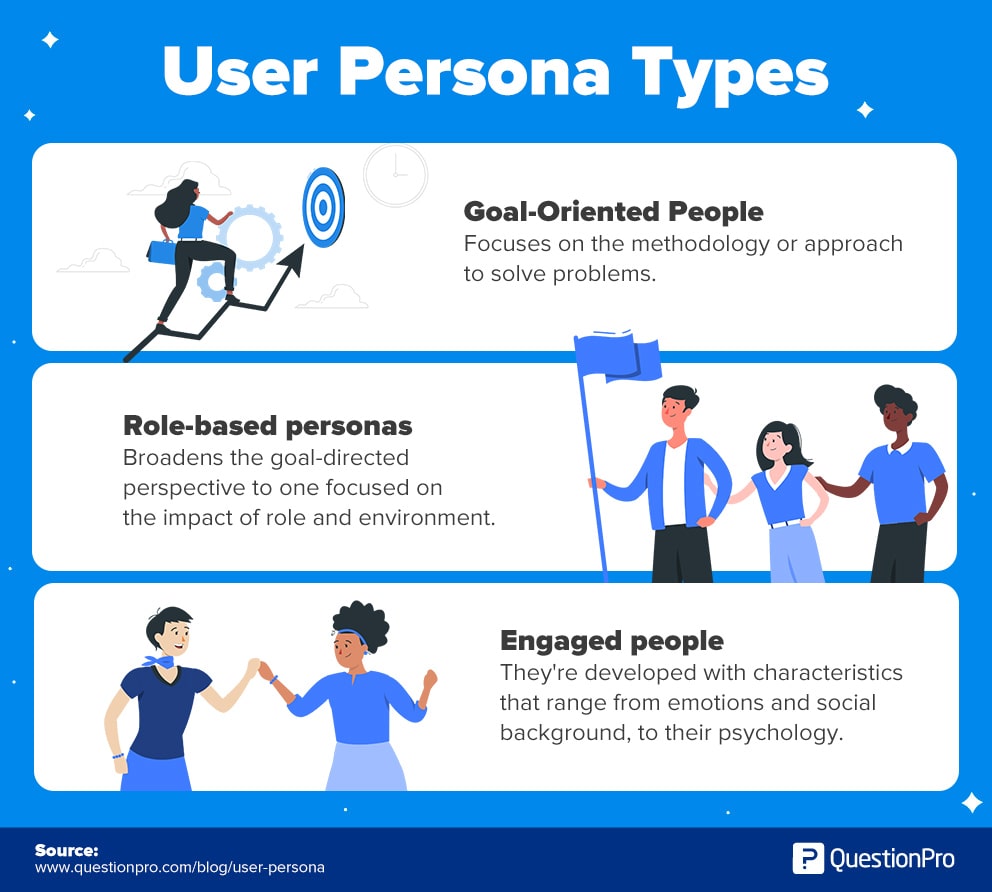How User Experience Impacts Purchasing Decisions for Digital Service Products opens the door to a world where the digital landscape is shaped by the way users interact with services. Understanding user experience (UX) is crucial; it not only influences satisfaction but also drives the decisions consumers make when purchasing digital products. As we delve into the intricacies of user journeys, interface designs, and emotional connections, we uncover the key components that create a memorable and effective user experience.
This exploration reveals how visual appeal and thoughtful design can transform a simple transaction into a lasting relationship, fostering loyalty and trust. By examining various aspects such as emotional impact and metrics, we learn how to measure and enhance user experience effectively, ensuring that businesses stay ahead in the competitive digital marketplace.
Understanding User Experience

User experience (UX) is the overall emotional and practical response users have when interacting with digital service products. It encompasses every aspect of the user’s interaction, from the initial point of contact to the final outcome. A well-crafted user experience is crucial, not only for retaining customers but also for driving purchasing decisions. Companies that prioritize UX see higher satisfaction rates, better customer loyalty, and ultimately, increased revenue.The user journey plays a pivotal role in shaping overall satisfaction.
Each step in the journey, from awareness to consideration and conversion, influences how users perceive a brand and its services. A seamless and intuitive user journey fosters positive feelings, encouraging users to complete their purchases and return in the future. It reinforces the idea that the entire experience matters as much as the product itself.
Key Components of Positive User Experience
Several essential elements contribute to creating a positive user experience that can significantly impact purchasing decisions. Understanding these components allows businesses to enhance their services effectively.The importance of these elements can be highlighted through the following key components:
- Usability: A product must be easy to use. Intuitive navigation and clear instructions minimize user frustration, leading to higher conversion rates.
- Accessibility: Ensuring that digital products are usable by people with varying abilities broadens the potential user base and demonstrates inclusivity.
- Aesthetic Design: Visually appealing interfaces create positive first impressions. An attractive design can enhance engagement and encourage users to explore further.
- Content Relevance: Providing accurate and engaging content that meets user needs keeps users interested and informed, leading to informed purchasing decisions.
- Feedback and Support: Offering responsive customer support and opportunities for user feedback enhances trust and encourages repeat interactions, fostering a loyal customer base.
Aspects like usability and aesthetic design not only improve satisfaction but also contribute to a brand’s reputation in a competitive market, ultimately guiding users towards making purchases. A positive user experience leads to higher customer loyalty and advocacy, driving sales through both direct and indirect means.
“User Experience is the key differentiator in today’s digital landscape; it can turn casual visitors into loyal customers.”
Creating a holistic user experience that integrates these components ensures that users recognize the value of a digital service product, influencing their purchasing behavior positively. Companies that excel in these areas are often the ones that lead their industries, reflecting the undeniable impact of user experience on business success.
The Role of User Interface Design: How User Experience Impacts Purchasing Decisions For Digital Service Products
User interface (UI) design is a pivotal element in shaping consumer perceptions and influencing purchasing decisions in the digital marketplace. A well-crafted UI not only attracts users but also fosters trust and enhances user engagement, ultimately leading to higher conversion rates. In the competitive landscape of digital service products, the visual aspects and functionality of a platform can make all the difference in how potential customers perceive a brand.The visual appeal of a service product is paramount because it directly affects how users interact with the product.
An aesthetically pleasing and intuitive design can make a service appear more credible and enjoyable to use. Users are naturally drawn to interfaces that are clean, organized, and easy to navigate. This creates a positive first impression, which can be crucial in retaining potential customers.
Influence of Visual Appeal and Functionality
Effective UI design combines both visual aesthetics and functionality, leading to enhanced user satisfaction and loyalty. The importance of visual appeal in service product design cannot be overstated, as it plays a significant role in user engagement and decision-making. The following points highlight how exemplary UI design can impact consumer perceptions:
- Brand Identity: A cohesive and attractive UI reinforces brand identity, ensuring that users associate positive experiences with the brand. For instance, Apple’s seamless interface across its devices reflects its brand ethos of simplicity and elegance.
- Trust and Credibility: Users are more likely to trust platforms that appear professional and polished. A study by Stanford found that 75% of users judge a company’s credibility based on its website design.
- User Retention: A visually appealing and user-friendly interface encourages repeat visits. Dropbox exemplifies this through its clean and straightforward design, making it easy for users to navigate and utilize its features effectively.
- Emotional Connection: Well-designed interfaces align with user emotions and preferences, leading to stronger connections. Pinterest leverages vibrant visuals and intuitive navigation, enhancing user engagement through emotional resonance.
- Accessibility: A thoughtful UI design ensures that all users, including those with disabilities, can interact with the service. Websites following accessibility guidelines expand their audience reach, as seen with the success of platforms like Airbnb that prioritize inclusive design.
An excellent example of effective UI design is seen in Spotify, which combines stunning visuals with user-friendly navigation. Its personalized playlists and aesthetically pleasing interface create an engaging experience that keeps users coming back. Similarly, Airbnb’s UI focuses on beautiful imagery and a straightforward booking process, effectively enhancing user satisfaction and driving conversions. A well-designed user interface not only attracts customers but also cultivates lasting relationships by providing an exceptional user experience.
By focusing on both visual appeal and functionality, digital service products can significantly impact consumer perceptions and purchasing decisions, ensuring a competitive edge in the marketplace.
Emotional Impact of User Experience
Emotions are a powerful driving force behind consumer purchasing decisions, particularly in the realm of digital service products. Understanding how user experience elicits emotional responses can significantly influence brand loyalty and customer retention. Positive user experiences foster connections that go beyond mere transactions, creating lasting impressions that can shape consumer behavior.The emotional landscape of user experience plays a crucial role in how consumers perceive and interact with digital services.
When users feel positive emotions such as joy, satisfaction, or trust during their interactions, they are not only more likely to complete a purchase but also to return for future transactions. This emotional engagement can transform casual users into loyal advocates for a brand.
Positive User Experiences Foster Brand Loyalty, How User Experience Impacts Purchasing Decisions for Digital Service Products
Creating positive user experiences is essential for cultivating brand loyalty. When users encounter seamless interfaces, intuitive navigation, and engaging content, they are more likely to develop emotional ties to the brand. These experiences can lead to increased customer retention and advocacy. Here are key aspects that illustrate this phenomenon:
Trust Development
A well-designed user interface can instill trust in consumers. When users feel confident in the security and reliability of a service, their emotional barriers are lowered. For instance, companies like PayPal have established trust through user-friendly designs and robust security features.
Joy and Satisfaction
Brands that prioritize user experience can evoke feelings of joy and satisfaction. Take Apple, for example; the design of their apps and devices creates an enjoyable experience that resonates with users, leading to high levels of brand loyalty.
Community Connection
Building an emotional connection goes beyond the individual user. Brands that foster community around their services can enhance emotional ties. For instance, platforms like Discord create a sense of belonging among users, encouraging them to remain engaged and loyal.
“Emotions are the invisible influencers of consumer behavior; a positive experience can turn a customer into a lifelong advocate.”
Psychological Triggers Affecting Consumer Behavior
Psychological triggers significantly influence how consumers respond to digital services. Understanding these triggers allows brands to create experiences that resonate on a deeper emotional level. Key psychological principles impacting consumer behavior include:
Scarcity
The principle of scarcity suggests that limited availability increases desirability. For example, a digital service offering exclusive features for a limited time can create urgency and encourage immediate purchases.
Social Proof
Consumers often look to others when making decisions. User reviews, testimonials, and ratings serve as social proof, helping potential customers feel more secure in their choices based on the experiences of others.
Reciprocity
When users receive something of value, they are more inclined to give back. Offering free trials, useful content, or valuable resources can trigger a sense of obligation, leading users to make purchases.
Anchoring
The anchoring effect occurs when consumers rely heavily on the first piece of information encountered. Pricing strategies that present a high initial price followed by a discounted offer can create a perception of value that drives purchases.Understanding the emotional impact of user experience and the psychological triggers that influence consumer behavior is crucial for brands looking to succeed in the competitive landscape of digital service products.
By fostering positive emotional connections and leveraging psychological principles, brands can not only enhance user experience but also significantly boost their purchasing outcomes.
User Experience Metrics
User experience (UX) metrics are essential for understanding how users interact with digital service products. These metrics provide insights into the user journey, allowing businesses to make data-driven decisions that can significantly influence purchasing behavior. By measuring UX effectively, companies can enhance user satisfaction, reduce friction, and ultimately increase conversion rates.Measuring user experience involves collecting specific data points that reflect both user behavior and satisfaction levels.
Effective UX metrics can help identify pain points in the user journey, highlight areas for improvement, and ensure that the product meets the needs and expectations of users. Below are key performance indicators (KPIs) that are vital for assessing user experience.
Key Performance Indicators for Measuring User Experience
To effectively monitor user experience, businesses should consider various KPIs. These indicators can reflect the quality of user interactions and their likelihood to make purchases.
- NPS (Net Promoter Score): Measures customer loyalty and satisfaction by asking users how likely they are to recommend the product. A higher NPS indicates a stronger likelihood of repeat purchases.
- CSAT (Customer Satisfaction Score): Evaluates user satisfaction immediately after interactions. It helps gauge user contentment and can lead to increased purchasing if positive.
- Task Success Rate: Tracks the percentage of users who successfully complete a task. Higher success rates often correlate with higher conversion rates.
- Time on Task: Measures how long users take to complete specific tasks. Less time often indicates a more intuitive design, which can lead to higher purchases.
- Bounce Rate: Indicates the percentage of visitors who leave the site after viewing only one page. A lower bounce rate often means users find the content engaging enough to explore further.
A comparison of different user experience metrics and their impact on purchasing decisions can provide businesses with a clearer understanding of which factors are most influential.
| Metric | Impact on Purchasing Decisions |
|---|---|
| NPS | Higher NPS typically indicates a greater likelihood of referrals and repeat purchases. |
| CSAT | Directly correlates with user satisfaction, leading to increased loyalty and purchasing behavior. |
| Task Success Rate | Indicates ease of use; a higher rate promotes user confidence in making purchases. |
| Time on Task | Shorter times often reflect a streamlined process, encouraging users to complete purchases. |
| Bounce Rate | A lower bounce rate suggests a strong initial impression, likely resulting in further engagement and purchases. |
Gathering user feedback effectively is crucial for refining these metrics. By employing various methods, businesses can obtain valuable insights to enhance the user experience.
Methods to Gather User Feedback Effectively
Utilizing diverse feedback channels can provide a comprehensive understanding of user experiences. The following methodologies are effective in collecting user feedback:
- Surveys: Conduct post-interaction surveys to gather quantitative and qualitative data on user satisfaction and pain points.
- User Interviews: In-depth discussions with users can uncover specific insights and experiences that quantitative data may overlook.
- Usability Testing: Observing users as they interact with the product can identify usability issues and areas of improvement directly.
- Analytics Tools: Utilize web analytics platforms to track user behavior and engagement metrics, providing insights into how users navigate the product.
- Social Listening: Monitor social media platforms and online reviews to capture spontaneous user feedback and sentiment about the product.
By implementing these strategies, businesses can not only gather valuable data to inform UX improvements but also create a more engaging and customer-centric digital service product that drives purchasing decisions.
Case Studies
Case studies serve as powerful examples of how enhanced user experience (UX) can dramatically influence purchasing decisions for digital service products. Businesses across various sectors have recognized that optimizing their UX is not merely an aesthetic choice but a strategic one that directly impacts their bottom line. Through these case studies, we can explore the tangible benefits that come from investing in user experience design and the lessons learned by those who made these improvements.
The following examples illustrate the correlation between UX enhancements and sales performance.
Case Study: Airbnb
Airbnb faced challenges with user engagement and conversion rates in its early stages. By focusing on usability and emotional engagement, they revamped their platform to ensure a seamless user journey. The results were impressive:
Sales Performance Before Enhancement Initially, the conversion rate hovered around 2%.
Sales Performance After Enhancement Following UX improvements, the conversion rate surged to over 10%.The redesign included features such as personalized recommendations and enhanced search functionality, catering to user needs and emotions, which ultimately led to increased bookings.
Case Study: Shopify
Shopify, a leading e-commerce platform, identified that potential customers were leaving the site during the checkout process. To address this, they optimized their user interface (UI) and simplified the checkout experience. The changes resulted in:
Sales Performance Before Enhancement A significant drop-off rate of 68% during checkout.
Sales Performance After Enhancement The drop-off rate decreased to just 20%.Notably, the simplified checkout not only improved user satisfaction but also increased overall sales, demonstrating the critical role of UX in reducing abandonment rates.
Case Study: Zappos
Zappos is renowned for its exceptional customer service, which is closely tied to its user experience strategy. By prioritizing user feedback and making continuous improvements, they built a platform that resonates with their audience. The outcome was commendable:
Sales Performance Before Enhancement Zappos faced challenges with customer retention and repeat purchases.
Sales Performance After Enhancement The company reported a 75% increase in customer retention, directly attributed to improved UX.Zappos utilized various UX metrics, such as customer satisfaction scores and net promoter scores (NPS), to measure their success and drive further enhancements.
Lessons Learned from UX Improvements
These case studies highlight crucial takeaways for businesses looking to enhance their user experience:
1. Prioritize User-Centric Design Understanding user needs leads to effective solutions that resonate with the target audience.
2. Continuous Testing and Feedback Regularly gathering user feedback allows for iterative design improvements.
3. Emphasize Emotional Connection A focus on the emotional aspects of user experience can drive loyalty and increase sales.
4. Measure Success with Metrics Utilizing UX metrics helps businesses track progress and justify investments in UX.
Investing in user experience is investing in your customers’ satisfaction and your bottom line.
Best Practices for Enhancing User Experience
In the realm of digital services, enhancing user experience (UX) is pivotal for fostering customer loyalty and driving purchasing decisions. A well-designed user experience can significantly influence how users interact with your service, leading to increased satisfaction and conversion rates. The following best practices Artikel essential strategies that can help businesses elevate their user experience.
Best Practices to Improve User Experience
Implementing best practices for user experience is crucial for creating intuitive and engaging digital services. The following points highlight effective strategies for enhancing UX:
- User-Centered Design: Focus on designing from the user’s perspective. Understand their needs, preferences, and pain points to create a product that truly resonates with them.
- Simplified Navigation: Ensure that users can easily find what they are looking for. A clear, logical navigation structure minimizes confusion and enhances satisfaction.
- Responsive Design: Create a seamless experience across devices. With users accessing services from various platforms, responsive design ensures usability on all screens.
- Consistent Branding: Maintain visual and functional consistency throughout the product. This reinforces brand identity and builds user trust.
- Accessibility Features: Incorporate features that cater to users with disabilities. Ensuring your service is accessible broadens your audience and complies with legal standards.
User Research and Application in Service Design
Conducting user research is fundamental to understanding your audience and refining your service design. The following steps Artikel an effective research process:
- Define Research Objectives: Identify what you want to learn about your users and how that information will inform your design decisions.
- Choose Research Methods: Utilize a mix of qualitative and quantitative methods such as surveys, interviews, and usability testing to gather diverse insights.
- Recruit Participants: Select a representative sample of your target audience to ensure the findings are relevant and actionable.
- Conduct Research: Engage with users through your chosen methods, capturing their feedback and behaviors while interacting with your service.
- Analyze Findings: Organize and interpret the data to identify key themes and insights that can inform design improvements.
- Apply Insights to Design: Integrate the findings into your service design, making informed adjustments that cater to user needs and preferences.
Benefits of Iterative Design Processes in Enhancing UX
Embracing an iterative design process allows for continuous improvement and refinement of the user experience. The advantages of this approach include:
- User Feedback Integration: Regularly testing prototypes with real users provides immediate feedback, which can be used to make swift adjustments.
- Risk Mitigation: By validating design choices in small iterations, potential issues can be identified and addressed before full-scale implementation, reducing costly mistakes.
- Enhanced Collaboration: An iterative approach fosters collaboration among cross-functional teams, ensuring that diverse perspectives shape the final product.
- Adaptability: The flexibility of iterative design enables teams to respond to changing user needs and market trends effectively.
- Optimized User Engagement: Continuous testing and improvements lead to a product that better aligns with user expectations, enhancing overall engagement and satisfaction.
Future Trends in User Experience
The evolution of user experience (UX) design is an exciting journey that reflects changing consumer needs and technological advancements. As we look toward the future, several emerging trends are poised to reshape the landscape of UX for digital services. These trends are not just about improvement; they represent a significant shift in how users will interact with digital products and services in the coming years.
Emerging Technologies Influencing User Experience
The future of user experience will be heavily influenced by a number of cutting-edge technologies. The integration of these technologies will fundamentally enhance how users engage with digital service products.
- Artificial Intelligence and Machine Learning: AI is set to personalize user experiences at an unprecedented level. Algorithms can learn user preferences and behaviors, enabling services to adapt in real-time. For instance, music streaming platforms already use AI to curate personalized playlists, enhancing user satisfaction.
- Voice User Interface (VUI): Voice technology is becoming a staple in user interaction. Its rise in popularity is largely due to the convenience it offers. Digital assistants like Alexa and Siri have transformed how users engage with technology, making voice commands a natural part of the digital experience.
- Augmented Reality (AR) and Virtual Reality (VR): As AR and VR technologies evolve, they will create immersive experiences that go beyond traditional screen interactions. Industries like retail are already exploring AR to allow virtual try-ons, enhancing customer engagement and reducing purchase hesitation.
- 5G Connectivity: With faster internet speeds, 5G will enable richer multimedia content and more interactive user experiences. This connectivity will support seamless streaming, immediate content downloads, and real-time interactions, enhancing the overall user experience.
Predictions for UX Evolution
The trajectory of user experience design is expected to follow certain patterns in the next few years. Companies prioritizing user-centric design will likely thrive, while those neglecting UX may struggle to retain customers.
- Increased Focus on Accessibility: The conversation around inclusivity in digital products is growing. Brands that prioritize accessible designs will cater to a wider audience, ensuring that everyone can engage with their services.
- Data Privacy and Security Awareness: As users become more aware of their digital footprints, companies will need to balance personalization with privacy. Transparent data practices will become a selling point, enhancing user trust.
- Emphasis on User Feedback Loops: Continuous improvement will rely heavily on user feedback. Organizations will increasingly implement real-time feedback mechanisms to refine UX based on actual user experiences.
- Context-Aware Experiences: The future will see a move towards context-aware technologies that adapt to users’ environments, preferences, and behaviors. This personalization will make digital interactions feel more organic and intuitive.
The future of user experience is not just about technology; it’s about creating meaningful connections that resonate with users.











